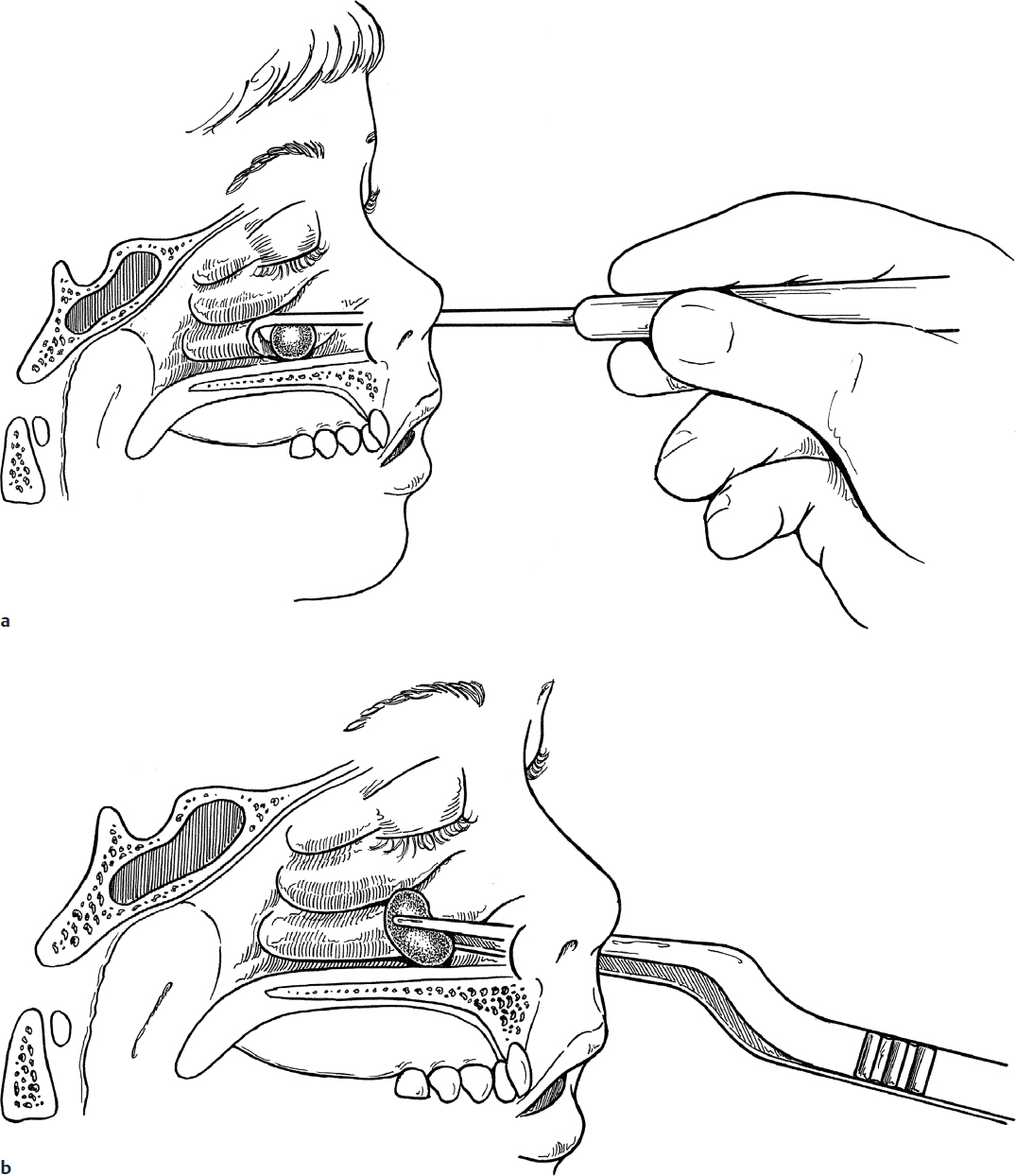Nasal Foreign Bodies
Children frequently put foreign bodies into their noses. Paper, vegetables (beans), and stones are common examples. A nasal foreign body is suspected in a child with a foul-smelling unilateral nasal discharge.
11-1 Removal of Nasal Foreign Bodies
Indications
Nasal foreign bodies should be removed expeditiously to avoid nasal and sinus infections.
Preoperative Evaluation
The foreign body is usually seen on anterior rhinoscopy. Endoscopic examination may be helpful in locating a nasal foreign body. This is most easily done if the nasal cavity is suctioned and decongested with 4% cocaine (alternately, any combination of a topical vasoconstrictor and local anesthesia may be used). If a foreign body is not seen but is highly suspected, the examination should be performed under general anesthesia. Most nasal foreign bodies are radiolucent, so radiographs are rarely helpful.
Operative Technique
1. Removal of nasal foreign bodies in small children usually requires immobilization with a papoose board. Older children may cooperate for removal of the foreign body utilizing topical anesthesia. Occasionally, general anesthesia may be required.
2. The nasal mucosa is decongested with 4% cocaine dropped or sprayed into the nose (alternately, any combination of a topical vasoconstrictor and local anesthesia may be used).
3. After the nasal cavity is suctioned clear of mucus, the foreign body is removed under direct vision or endoscopically.
4. Rounded foreign bodies should be rolled to the anterior nare with a blunt hook (Fig. 11.1a).
5. Foreign bodies that can be grasped with a forceps can be removed in this fashion (Fig. 11.1b).
6. Foreign bodies in the posterior nasal cavity or partially in the nasopharynx are always removed under general anesthesia to prevent aspiration. They can be grasped with forceps while placing a finger in the nasopharynx to prevent posterior displacement (Fig. 11.1c).
7. Identification of button batteries that are located in the nasal cavity or other parts of the upper airway should be removed on an urgent basis. Direct current and acid discharging can cause local tissue damage within minutes to hours. In most instances, foreign body hooks, forceps, or suctions may be used to successfully remove these items (Fig. 11.1d).
Complications
Mucosal abrasion.




